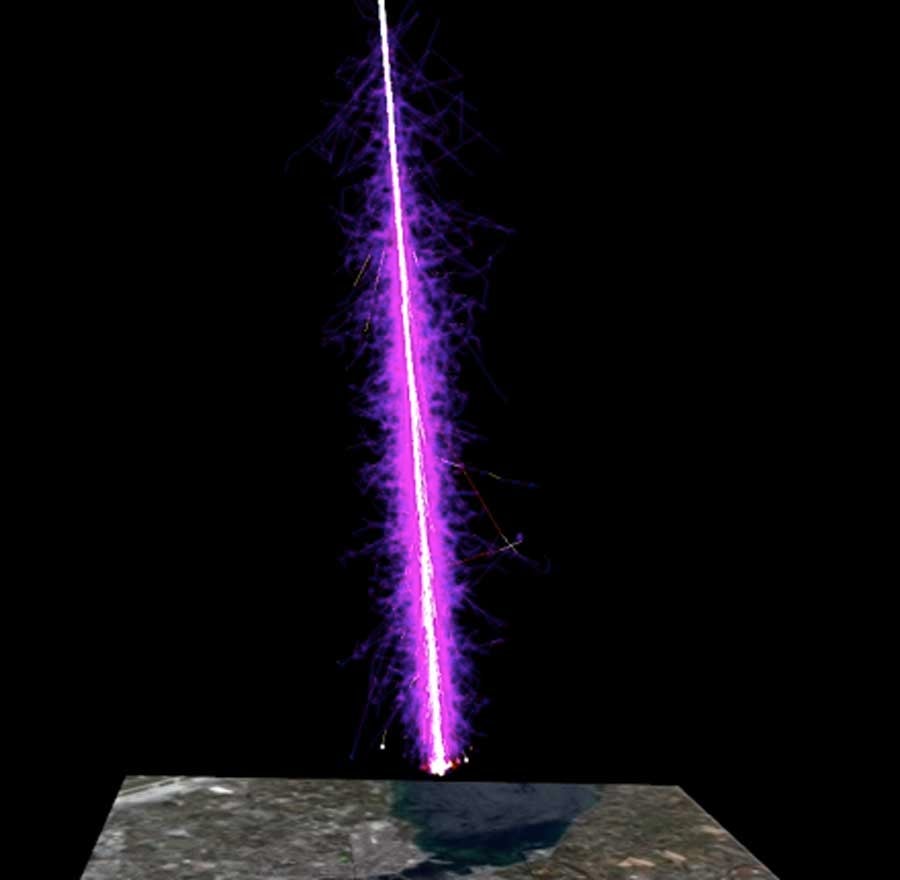Yet these energies pale in comparison to what nature can produce. The Sun, exploding stars, active galaxies, and other sources can accelerate subatomic particles to near light-speed. Although these particles, called “cosmic rays,” typically have energies measured in billions of electron volts, a few can reach 100 million TeV. Such ultra-high-energy cosmic rays are exceedingly rare, and astronomers still haven’t figured out what process can accelerate them to such speeds. Many of these particles pass through Earth unaffected, but some strike molecules in our planet’s atmosphere. This triggers a shower comprising billions of electrons and other fundamental particles that scientists can study to learn about the original cosmic ray.
In this video, a proton (shown in white) traveling at close to the speed of light packs an energy of 1 million TeV. The particle slams into an air molecule high above Chicago and unleashes a shower of electrons, positrons (the electron’s antiparticle), and muons. Note that many of these particles subsequently collide with other air molecules, creating a cascade that ultimately reaches the ground. Scientists can establish the properties of the original proton by studying such a shower.










